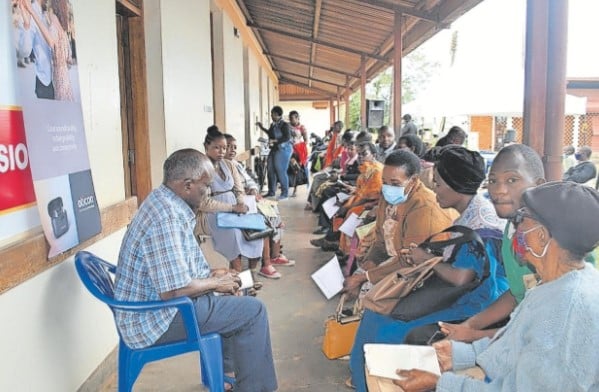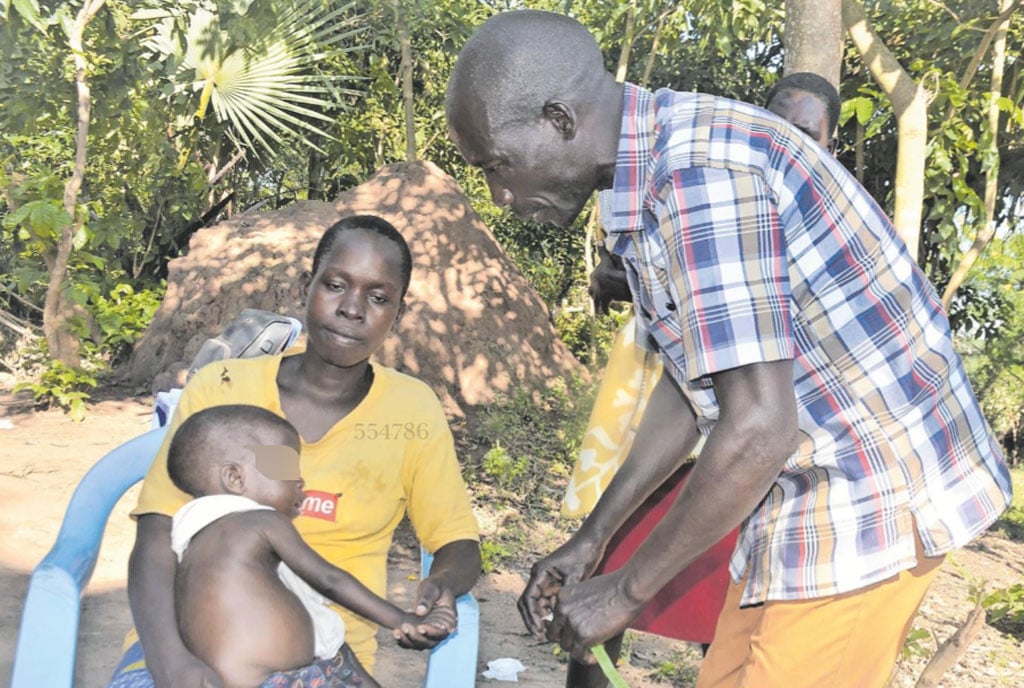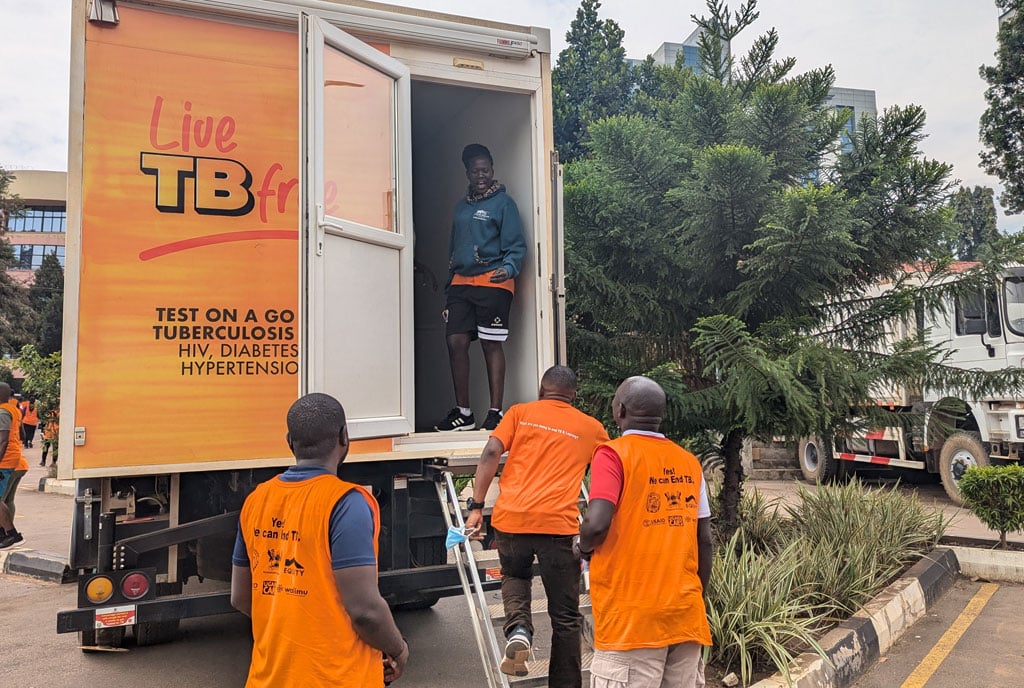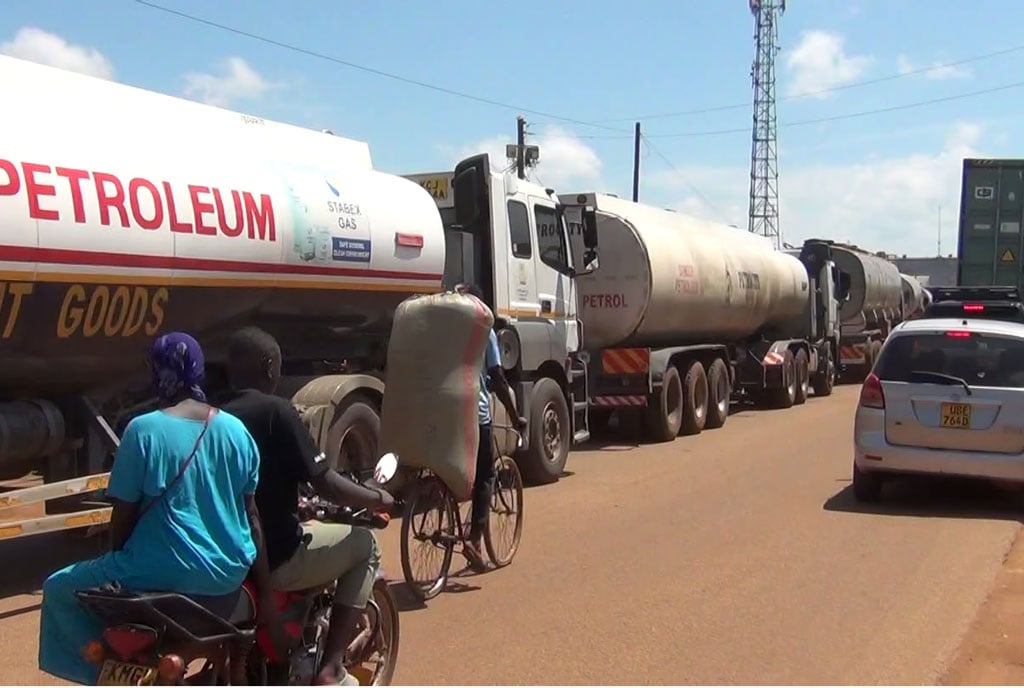
The patients at Masaka Regional Referral Hospital wait to receive treatment on August 17. PHOTO | RICHARD KYANJO
In the 2023/2024 Financial Year, the Ministry of Public Service approved a new staffing structure to be implemented by local governments nationwide, aimed at improving service delivery in health centres. This restructuring intends to reduce the health worker-to-patient ratio by significantly increasing staff numbers. Under the new guidelines, hospitals are now expected to employ approximately 343 staff members, up from 133, while Health Centre IVs will require 133 workers compared to the previous 56. Health Centre IIIs, in turn, must recruit 56 employees, an increase from the previous 13. Despite these plans, many districts have faced challenges in implementing the new staffing structure.
A primary obstacle is the limited budget for wages, which makes it difficult to cover the salaries and allowances of the additional employees. According to Dr Edward Muwanga, the Kyotera District health officer, increasing the number of health workers may be hard to achieve in some newly created districts.
“It’s true there should be more civil servants in the health sector, but the government ought to increase our wage bill in order to meet the salaries of those people,” he said during an interview yesterday. Dr Muwanga added that there has been an increase in the admission of patients and expectant mothers turning up for antenatal services compared to the past when many women used to flock to shrines for healing.
“Due to increased sensitisation in the communities, people have now shunned the shrines and decided to come to our health centres, hence the overwhelming numbers. People are also civilised and they know the importance of being attended to by our professional health workers,” he explained.
At Kakuuto Health Centre IV in Kyotera District, only 33.8 percent of the required health workers are currently available, which forces the existing staff to work extra hours. Districts such as Masaka and Rakai have also failed to employ 50 percent of the required staff in the different hospitals and health centres. The situation is bad at Masaka Regional Referral Hospital because the hospital budget has never been increased to cater for the recruitment of new staff, according to Mr Charles Tumushiime, the hospital principal administrator.
“Almost all departments of the hospital have inadequate staff, we lack senior consultants, consultants, doctors and nurses, but the hospital budget for this financial year and the coming financial year are the same –implying that we will be unable to recruit new staff in the near future,” he said. Currently, the hospital has only 269 health workers against the recommended staff ceiling of 1,195, implying that they have a shortage of 926 health workers.
In Rakai District, the wage conditional grant or salaries to be paid in the 2024/2025 Financial Year amount to Shs10b and when the new structure is implemented, the figure will increase to more than Shs60b, according to a district official, who preferred anonymity to speak freely about the developments. Mr Nelson Elungant, the Kumi District chairperson, said it is not only the health sector that is in dire need of additional manpower but all departments of government at the district level.
He revealed that Atutur Hospital, the main hospital in Kumi District built in the early 1960s, requires more than 15 additional doctors to supplement the current team, as well as more midwives and support staff. However, the recruitment of these essential workers has been hindered by limited wage funding.
Mr Elungant noted that the situation is even more challenging for health centres at the sub-county level, where some facilities have only two midwives serving large populations. When one midwife is absent due to illness or leave, it creates a significant gap, severely impacting service delivery. On average, the district chairperson said at least each health centre III should have about five midwives, five nurses, and at least two medical doctors, but some don’t even have a medical doctor. Kabale District Health Educator Alfred Besigensi appealed to government to provide wages for the recruitment of key health workers as the few available health workers at the facilities are usually overworked.
“We currently operate at 45 percent of human resources in our health department according to the new staffing norms and this means that the health workers are overworked. We need wages to recruit key staff in our health facil-ities because only 15 percent out of the 45 percent human resource capacity we have in the health department are technical,” Mr Besigensi said.
Dr Filbert Nyeko, the Kabale Regional Referral Hospital director, said while the staffing levels at the facility stand at 24 percent under the new staffing structure, the existence of the supervisors and instructors of students undertaking medical and health-related courses at Kabale University School of Medicine has supplemented health service delivery at his facility.
“As we wait for the government to provide wages to recruit more health workers as per the new staffing structure, we shall continue to welcome the services of instructors and professors from Kabale University School of Medicine who come to supervise their students as they do practical lessons at Kabale Regional Referral Hospital since they participate in treating patients,” Dr Nyeko said.
The officer-in-charge of Mayuge Health Centre IV, Dr Ismail Wangubo, said they have not yet implemented the new Health Employment Structure because funds have not been allocated. Currently, Dr Wangubo said their staffing level stands at 42 percent.
“We have only 55 staff and we still need more in many departments,’’ he said. Dr Ivan Kamya, the Kiruhura District health officer, said: “We were at 80 percent staffing level in the health sector, but with the new structure that was just released in May, we are now at 24 percent. This is not to say that we have not been recruiting, but because the government realised that we have a huge workload and decided to come up with a new structure. And the recruitment of new staff is gradual, it may take even 10 years”. Mr Edward Kasagara, the Rubirizi Dis[1]trict chief administrative officer, said their health staffing level is at around 72 percent.
“We would have recruited more staff, but the challenge is the wage, you cannot recruit staff that you will not be able to pay. If all the staff we have are at workstations, we would not be having challenges of service delivery, but you find some are absent, on annual and maternity leave,” he said. In the eastern district of Jinja, health facilities have yet to achieve 50 percent staffing levels under the new health employment structure.
“Our staffing is at 42 percent because the wages to enable us to implement the new structures is not there,” the district health officer, Dr Peter Dyogo, said He explained that they are still operating under the old staffing structure, despite directives to increase staffing levels from Health Center IIIs up to hospitals to enhance service delivery.
At Gulu Regional Referral Hospital, the facility’s management is largely relying on intern doctors and trainee nurses to address staffing challenges. The hospital now has only 40 midwives and less than 60 nurses, a factor that has deteriorated the quality of services. While the facility requires up to 30 medical consultants, it runs with only one medical consultant. The hospital management recently told visiting legislators that the facility serves the entire Acholi Sub-region, but has only 27 percent of the staff required and depends on the services of student interns. Mr Walter Uryekwun, the hospital’s principal administrator, said the lack of key medical staff at the hospital impairs the quality of services offered at the facility.
“The problem is big; key departments of the hospital are understaffed, but we have kept on notifying the ministry over our dilemma, and we are still waiting for their responses,” Mr Uryekwun said. Govt says Yesterday, Ms Catherine Bitarakwate, the permanent secretary of the Ministry of Public Service, could not respond to the concerns of local government officials and hospital administrators, saying she was attending a high-level meeting. “Sorry, I am in an important meeting, call later,” she said before hanging up. But Mr Emmanuel Ainebyoona, the senior public relations officer at the Ministry of Health, said implementation of the new employment structure has been delayed due to lack of funds.
“We welcomed the new structure as a ministry because boosting our human resource could have a direct impact on service delivery across the board, but no budgetary allocation was done to that effect. “We’re ready and optimistic that next Financial Year we shall be in a position to fill all the vacancies,” he added Mr Ainebyoona, however, did not state how much money is needed to fill the vacant positions in the sector.
REPORT
According to the Human Resources for Health Audit report of 2017/2018, private not-for-profit health facilities had a total of 17,629 staffing norms as per the public staffing norm framework and 14,784 were filled constituting 84 percent. A national combined public and private staffing level was at 77.5 percent. Despite continuous improvement in the overall national staffing level over the years, there is a persistent critical shortage of some health cadres such as anaesthetic officers, dispensers, pharmacists, theatre assistants and public health nurses.
The report, however, shows that there is relative overstaffing for some cadres such as clinical officers (104 percent) and laboratory staff (102 percent). Marked improvement in staffing level was realised for doctors from 57 percent in 2017 to 63 percent in 2018, midwives from 78 percent to 94 percent in 2018. Overall, according to the report, the health workforce employs more women than men at all levels of service delivery (54 percent females and 46 percent males).
Nursing, midwifery and theatre staff cadres are dominated by women while men dominate the higher-level and administrative positions such as senior consultants (more than 85 percent males), directors (more than 90 percent) and district health officers (more than 95 percent males).
Compiled by Al Mahdi Ssenkabirwa, Ambrose Musasizi, Robert Muhereza, Denis Edema, Simon Emwamu, Rajab Mukombozi, Tausi Nakato, Antonio Kalyango, Abubaker Kirunda, Emmanuel Arineitwe & Tobbias Jolly Owiny







